Providing the right nutrition for zoo animals

- Biotics and your pet: How pre-, pro- and postbiotics can help create a healthy gut
- Wheat germ foods for koi
- Bio conversion to build a sustainably fed world
Download your online version:
December 2022 www.internationalpetfood.com www.perendale.com
The Packaging Group GmbH Gerberstraße 50 · 51789 Lindlar, Germany · www.the-packaging-group.com



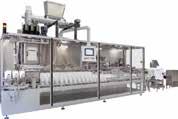














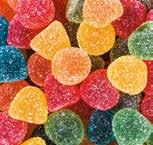


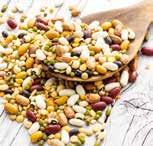
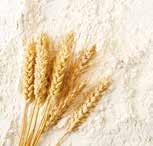




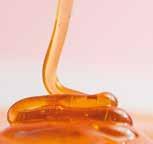

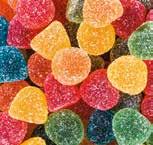

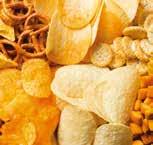
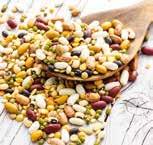
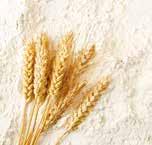




















YOU CAN THINK
CAN PACK IT
IF
IT WE
Watch our sustainable packaging solutions at: www.the-packaging-group.com/videoportal
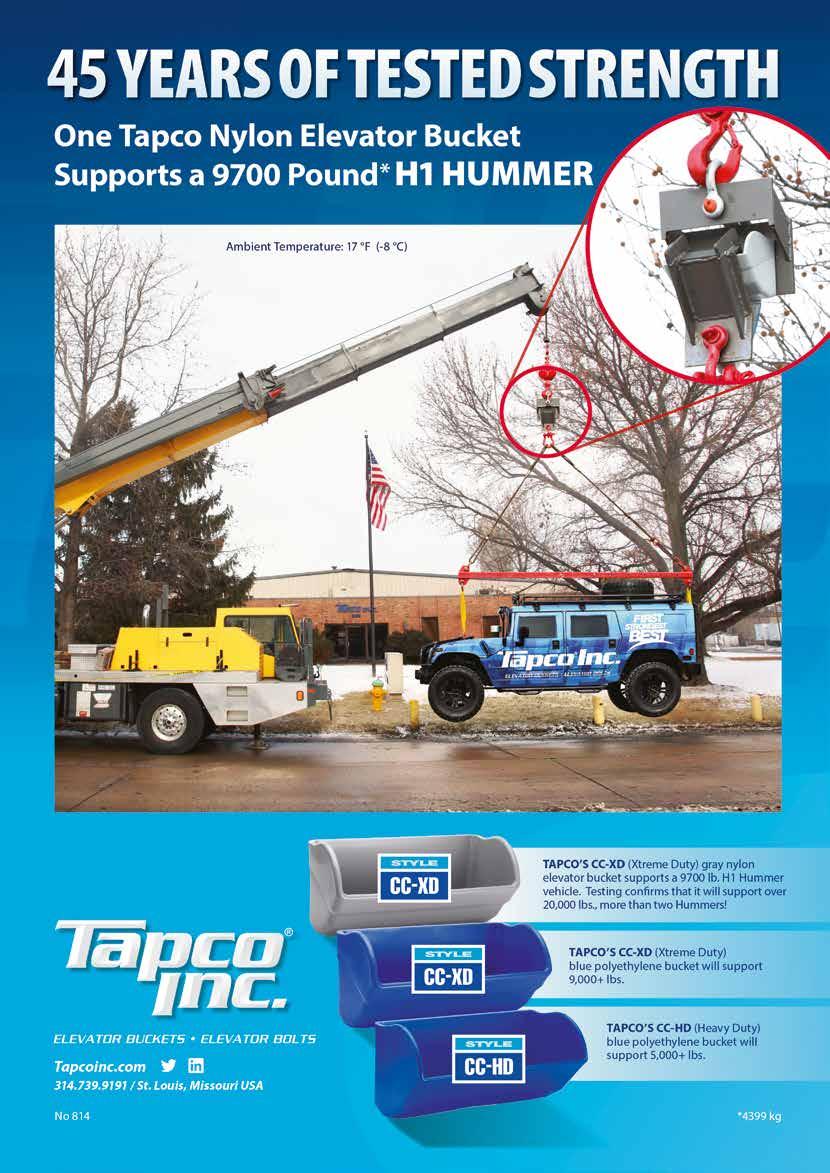
Perendale Publishers Ltd
7 St George’s Terrace
St James’ Square, Cheltenham, Glos, GL50 3PT, United Kingdom
Tel: +44 1242 267700
Publisher Roger Gilbert rogerg@perendale.co.uk
Managing Editor
Joy Nelloolichalil joyn@perendale.co.uk
Technical Editor Joe Kearns joek@perendale.com
Nutrition Editor
Prof Simon Davies simond@perendale.com
Editorial team
Shannon Parsons shannonp@perendale.co.uk
Niamh Cassidy niamhc@perendale.co.uk
Community Manager

Levana Hall levanah@perendale.co.uk
International Marketing Team
Darren Parris Tel: +44 7854 436407 darrenp@perendale.co.uk
Latin America Marketing Team
Clarissa Garza de Yta Tel: +52 669 120 0140 clarissag@perendale.com
Turkey, Eurasia and Middle East Marketing Team
Mehmet Ugur Gürkaynak Tel: +90 537 3646457 mehmetg@perendale.com
Egyptian Marketing Team
Mohamed Baromh Tel: +20 100 358 3839 mohamedb@perendale.com
India Marketing Team Dr T.D. Babu +91 9884114721 tdbabu@aquafeed.org
Asia Marketing Team Dante Feng Tel: +886 0227930286 dantef@perendale.com
Nigeria Marketing Team
Nathan Nwosu Tel: +234 8132 478092 nathann@perendale.com
Design Manager

James Taylor jamest@perendale.co.uk
Design PetFood Magazine
Cristina María Roldán Otero
Tel: +44 1242 267700 cristinaot@perendale.co.uk
Circulation & Events Manager


Tuti Tan Tel: +44 1242 267706 tutit@perendale.co.uk
Development Manager
Antoine Tanguy antoinet@perendale.co.uk
www.perendale.com ISSN 2754-4680
www.internationalpetfood.com
REGULAR ITEMS
9 Industry News COLUMNS 6 Roger Gilbert 7 Joseph P Kearns 8 Professor Simon Davies
December 2022
International Petfood - Volume 4 - Issue 12 ©Copyright 2022 Perendale Publishers Ltd. All rights reserved. No part of this publication may be reproduced in any form or by any means without prior permission of the copyright owner. More information can be found at
26 Industry Profiles 28 Training 29 Troubleshooting 30 Production focus 37 Industry Events 39 The Market Place 40 The Interview 42 Industry Faces

FEATURES 14 Providing the right nutrition for zoo animals 16 Biotics and your pet: How pre-, pro- and postbiotics can help create a healthy gut 18 Wheat germ foods for koi 22 Bio conversion to build a sustainably fed world
THE PUBLISHER
It’s the end of a momentous year, one we have spent much of our time trying to return to ‘normal’ activities and ‘normal’ work routines while disruption continues to plague us.
Where do our pets fit into this new ‘normal’ that includes the repercussions of war, higher energy prices for all, and the rising cost of foodstuffincluding food for our pets - production? And there are other disruptions that are challenging us as well, such as shortages, economic downturns, and delays with logistics which have impacted us significantly, not to mention the trend towards alternative foods, new food and feed ingredients, and new sources of supply for ourselves and our domesticate animals as well as our pets. We report on several of these topics in this edition. Our pets are family members, and we treat them as such.
Roger Gilbert Publisher – International Petfood
are endangered, and many species across all fauna, such as birds and fish, etc, that we take a liking to and wish to keep.
This is what makes our magazine different: the total breadth of species that are kept as ‘pets’ and which we provide feedstuffs for!
The production of foodstuffs, using mechanical means, to provide the correct nutritional formulation for a targeted species and its growth cycle which helps improve wellbeing while minimising disease risk is what we are all about.
If this is the area you are working in, then we will provide you with a free annual subscription to our magazine either digitally or a printed copy through the post.
Therefore, it’s about minimising the impact of all these factors on their well-being, especially when it comes to diet. Changing the diet of our pet - and even that of our children - can have detrimental effects if not done carefully with support and considered advice.
Professor Simon Davies tackles this issue on page eight where he discusses the implications of removing meat from the diets of cats and dogs.
In 2023 we will likely have to make changes in the way we purchase and provide food to our pets - that means that greater care must be taken.
Here at International Petfood we look not only at the production and nutrition of petfood’s but also at the wide variety of pets’ that we as humans foster. While cats and dogs are the primary pets when it comes to total numbers worldwide, there are lots of other ‘pets’ that we keep which includes zoo animals, those animals that
Also in this edition…
We have features in this edition on: Zoo animal diets; pre- proand post-biotics to help create a healthy gut; we highlight wheat germ as a feed ingredient for Koi; Bioconversion to build a sustainably-fed world, and a feature on Zoopan. This is all before we get to our Industry Training section and our Trouble Shooting section that looks at multiple ways to manage an extruder barrel.
Don’t overlook our Product Focus section on pages 28-29 that highlights a number of pieces of equipment that you might be interested in learning more about.
In the final section we have our show reports, our Market Place and our Interview, this month with Roger Townsend, the President of Behlen Grain Supplies in the USA.

A lot to read I know, but all contributing to the knowledge a petfood producer needs in a modern, competitive world where pets are number one! Happy reading.
Did you miss our November 2022 edition? If so, don’t panic!
You can still read all of the great quality content that we published last month on our App – which you can download from Apple Store, Google Play or online at: https://magstand. com/petfood – with the latter platform granting you the opportunity to see all of our back editions on the screen of your desktop computer.

What you may have missed…
An Axolotls Diet: The types of food that are both nutritional and enjoyable for axolotls by Shannon Parsons, International Petfood magazine Axolotls are the Peter Pan of Salamanders who manages to stay ‘young’ throughout their lives by retaining their larval characteristics and thereby never growing out of their aquatic lives like other salamanders
This article looks into the nutritional requirements of Axolotls and discussed about best ways to feed them.
To read more, go to: https://issuu.com/international_aquafeed/docs/ipf2211_final/14
The Interview
With Jorge Martinez Carillo, President, ADM Pet Nutrition, USA Jorge A. Martínez Carrillo is the President of ADM’s global pet nutrition business. Previously he was President of ADM’s animal nutrition business for Latin America. He joined ADM in 2013 under MaltaCleyton, serving as Vice President for the livestock, specialties and aquaculture division, where he strengthened the portfolio of products and services, expanding the network to more than 1,255 distributors in Mexico.
To read more go to: https://issuu.com/international_aquafeed/docs/ipf2211_ final/40
Our last edition 6 | December 2022 - International Petfood
Joseph P Kearns Editor, International Petfood Magazine

Baked petfoods and or treats, temperature confirmation for bacteria kill step, treats and snacks, dies and zoo feeds are all interesting topics and the ones we close out International petfood magazine’s first year. It has been exciting and challenging at the same time. Hoping our readers have enjoyed the first year and we are looking forward to 2023. With this in mind it would be quite interesting if the readership offered up some topics for review and if you are interested in passing some questions on send to joek@perendale.com for review in 2023 issues.
Baking of petfoods is a method to achieve the cook and temperature to achieve a good product and one that is bacteria free. In fact, commercial petfoods before extrusion were in many cases by-products from human food factories. Scrap breakfast cereals, fines and or broken crackers and bits from any baking industry were bagged and sold as a base product for pets. Pet owners learned that the food needed to be cooked if it contained starch as the pets’ digestive tracts could not handle raw starch. Many pet owners used table scraps to cook up a concoction of ingredients to feed dogs and cats. The scraps from baking factories allowed food to be prepared and not have to be cooked due to the starch being gelatinized already with combinations of other products added by the pet owners.
In more recent times the baking of petfoods has mainly centred on baked treats. Years ago, in New Zealand a product called TUX was shown to me and it was a baked dogfood. Having been in a position to sell petfood extrusion production machinery a discussion continued and it was a hard one to overcome. This was a famous New Zealand brand designed for their needs. I was told sheep farmers would feed the sheep dogs by tossing them a few biscuits a day out on the range. They were considered very convenience, balanced nutrition and included trusted ingredients. No bags no bowls, a few biscuits could be carried easily in a vehicle or on horseback. Today we see a number of outfits making baked petfoods and treats. The main claim is lower temperature and longer time yielding fewer nutrient losses. There is a difference in texture and flavours no doubt. We could analyse all the data but basically the bacteria needed to be eliminated and the moisture level or water activity was controlled. Both processes achieve these goals. In fact, recently the 2 processes are blending together, extrusion processes allowing high meat as well as a variety of ingredients, not all centred on cereal grains but include vegetables are being extruded with higher moisture levels out of the extruder and the balance of the process happens in the dryer much like the baking process. The textures from these processes are similar.
The baking industry is a time and temperature process and this would allow for predictable temperatures being hit with a selected formula over a set amount of time. Extrusion is a bit different as the process adds water, steam etc. to make the mix higher in water and the cooking by friction all happens in about 2 to 3 minutes, 2 minutes preconditioning and 30 seconds in the extruder barrel. Baking petfoods is a higher moisture dough prepared, formed and placed on a continuous baking sheet. Some current extrusion processes are extruded at such a high moisture the product is dough like off the die resulting in special handling or pre drying so the kibble holds it shape and can be conveyed to the final dryer or oven. The evolution of petfood production continues.
The extrusion process having so many actions going at once such as adding the dry and wet ingredients, controlling the cook profile, getting the die correct and expansion of the kibble as desired and the ability of an operator to insure all of this and control bacteria has pushed this process to computer controls and advanced sensing devices such as flow meters and temperature indicators in precise areas. Slide gates after the preconditioner and a flow restriction by pass device at the end of the extruder barrel allow for very accurate temperature control of the product. Typically, about 77 to 80OC minimum out of the preconditioner and right at 125 OC out of the extruder die are the approximate goals in the extrusion process. Since this is a guaranteed type of desired effect, the entire mass flow needs to hit the minimum temperature level. Temperature probe location is critical and needs to be located in the lowest temperature product flow area. The most important time for all of this is when the system is not in steady state operation, during start up and shutdown procedures. Basically, the slide gate on the preconditioner stays closed until the desired temperature is reached, it then opens and flow progresses. If the temperature goes down the slide gate shuts until conditions are met for it to open again. At the end of the extruder the same happens, temperature is reached the product exits the die and continues downstream, if temperature is too low which happened in every product start up the material is bypassed until the correct temperature is reached. Done correctly and you have achieved your kill step for bacteria. Keeping it clean downstream from the kill step is another topic.
Pet treats and snacks articles produced via the baking process will add details to this topic in coming issues. Many zoo feeds are extruded and are very specialized will all also be covered in future issues. We look forward to reviewing these and many others in more detail in next year’s additions. Happy Holiday Season to all.
THE EDITOR
International Petfood - December 2022 | 7
Simon Davies Nutrition Editor, International Petfood

Is it wise for our dogs and cats to give up the turkey and go veggie?
In the quest to go green, many see vegetarianism as the sustainable alternative, giving up or reducing meat consumption as a good thing to do for both health and the environment. Millions have adopted this regime globally and become fully vegan, or lacto-vegetarian and flexitarian claiming better health and promoting their concern for climate change and the rise of emissions from farming animals. This beggars the question as to whether our animal companion friends can go the same way as their owners.
Although most diets for canines and felines are commercially formulated with appreciable content of meat derived proteins, there is now a trend towards formulating only vegan diets for cats and dogs that omit meat byproducts completely and are entirely plant based. Dogs are the most veggie appreciative and can adapt as they have co-existed with humans for much longer and we have leaned them towards omnivory. Cats however are still semi-domesticated and are obligate carnivores. They have more strict nutritional requirements and are dependent on such essentials as taurine, have limited capacity to bio-convert carotenoids to vitamin A. This is also true of their vitamin D3 requirements that is satisfied by the cholecalciferol found in the tissues of animals. Cats also need arachidonic n-6 lipids in their diets for metabolic integrity and immune function.
More recent thinking now suggests that if all nutrients are supplied there is nothing ‘in theory’ to prevent a diet being totally plant based with all other essential nutrients added or fortified within a basal meat-free formula. It is apparent that no species really has a specific need to achieve a balanced diet via meat if the diet is ‘nutritionally sound’ and of course palatable. Recent surveys to examine animal ‘happiness’ on vegan feeds and the opinions of their owners does show some surprising results for those that may question the practice.
Dr Andrew Knight of the University of Winchester’s Centre of Animal Welfare in the UK has recently conducted such studies. This included 2300
dogs and 1100 cats on a variety of diets, and he found little differences in terms of palatability between animal based and plant-based diets. This study also did not yield evidence of any health disorders for the animals. The first large-scale study of the health effects of vegetarian diets designed for companion animals was led by Dr Adronie Verbrugge (Chair of veterinary clinical nutrition) at the University of Guelph in Ontario, Canada in 2021. In their report, the team examined the results from 1000 cat owners who fed cats a strictly plant formulated diet. On analysis of cat stools, body coat and general condition indices these animals were very good displaying reduced incidences of gastrointestinal disturbances and a very good appetite. In my opinion, such diets are feasible but only under careful nutritional supervision and by experts. Various ‘homemade’ recipes can be highly risky and specifically nutrient deficient. Many veterinarians and expert animal nutrition scientists including myself express caution. I would agree with the President of the British Veterinary Association Justine Shotton with her view of extreme plant-based diets for dogs and cats. In a statement from the BVA website she says ‘Meat contains vital vitamins and nutrients needed by cats and dogs. Although we would not recommend it, it is theoretically possible to feed a dog a vegetarian diet, but owners would need to take expert advice to avoid dietary deficiencies and associated disease, as it is much easier to get the balance of nutrients wrong than to get it right. A dog on a vegan diet may also need synthetic supplementation’.
Another area of contention is feeding of fresh raw or freshly frozen meat for both dogs and cats as components of Biologically Appropriate Raw Food (BARF) diets. These are also becoming a trend but require caution despite the evidence of promoting healthy dogs and cats.
So will it be turkey and veg this Christmas for your dog and cat? Well, a slice of turkey may still be the sure bet!

8 | December 2022 - International Petfood
Professor
Perdue Farms invest
food processing facility in Michigan
Perdue Farms (food and agricultural firm) are investing more than US $27 million to renovate a former food processing facility in Shelby Michigan.
With this new venture, Perdue farms plan to source more local ingredients for a ‘human-grade’ pet treat operation. The project is driven by the recent substantial growth in perdue foods pet treat division.
This comes after the Michigan Commission of Agriculture and Rural Development voted to approve grants to five local Michigan businesses, which allowed businesses to increase production space, expand services, and create new jobs. Perdue received a US $100,000 grant to create 99 new jobs whilst supporting Michigan’s agricultural industry/ local companies.
The company manufactures pet food products under the brands ‘Spot Farms’ and ‘Full Moon’, which are sourced and distributed in the US and Canada.
Spot farms is a family-owned company that creates ‘human-grade’ dog food, by using regionally grown, USDA approved, antibiotic-free chicken, turkey and pork. The brand states no artificial colours or preservatives are used. They are also a member of the non-profit organisation ‘1% for the planet’.
The brand ‘Full moon’, established in 2011, creates human-grade dog treats, cooked in small batches using dehydration instead of high heat thermal extrusion.
“As people are increasingly seeking cleaner labels in what they feed their pets, this new production facility will play a key role in the continued growth of our human-grade pet treat brands,” says Ryan Perdue, Vice President and General Manager of Perdue’s Pet Business. “The central location of this facility in Michigan will help us drive efficiencies in our supply chain, improve freight costs, enable access to a strong local workforce, and allow for multiple phases of expansion within the property’s existing footprint. Importantly, the project grant from the Michigan Department of Agriculture and Rural Development will help support the creation of nearly 100 new jobs to the area, and we commend their efforts to incentivize agricultural and manufacturing expansion in the state.”
Arecent report by Insight Ace Analytic has stated that the global insect-based pet food market is estimated to reach 15.2 billion by 2030, growing at an 8.74 percent CAGR. Factors impacting this predicted growth include online shopping, high consumer demands for organic and sustainable petfood, increased pet adoption worldwide, increasing health consciousness and pet humanisation.
Due to its accessibility benefits, online shopping is increasingly used by consumers, and this applies to insect-based snacks such as toppings and Jerky, which can be sold and delivered online.
Human food trends that link to high consumer demands for organic and sustainable foods apply to petfood also, a driving factor for the increased popularity of insect-based petfood. Owners wanting to treat their pets as they would treat humans result in increased consumer awareness of nutrient-dense food, rising health-consciousness, and insects from the pet’s origin being used due to the high likelihood of those insects’ being nourishing and safe for pets. Currently, there is ongoing research and development efforts for more protein-rich ingredients in insect-based petfood, as the market possibilities in that sector are rapidly expanding.
The insect-based petfood market has been segmented into three categories: product type, nature, and source.
The product types available include kibble/dry, extrude, baked, coated, dehydrated food treats & chews, free-dried raw, wet food, frozen, raw food, powder, freeze-dried. The frozen insect-based petfood type is particularly growing rapidly due to increased pet health awareness. The nature of insect-based petfood can be categorised into organic, mannoprotein, and conventional. The organic nature is a major contributor, due to increasing consumer concern for human-grade substance. Sources of inset-based include crickets, mealworms, and black soldier flies.
The North American insect-based petfood market has a significant regional revenue share and is expected to be the highest market share soon. The Asia-pacific market is also growing rapidly, likely due to the practicality of insect-based petfood, and its suitability for city lifestyles, which have increased due to urbanisation of rural areas.

The global insect-based pet food market is valued at 7.22 billion in 2021, estimated to reach 15.2 billion by 2030
more than US $27 million to renovate former
International Petfood - December 2022 | 9
New report highlights the effects of inflation and conflict on the petfood market
New market research from Euromonitor International has reported differing effects throughout Europe of on the petfood market, due to inflation and the Ukraine conflict.
Retailers and suppliers have struggled to maintain online availability, since supply chain disruptions due to the ongoing war in Ukraine have impacted the availability of dog and cat food all across Europe. It has also increased competition for commodity goods. Consistent availability is a struggle for online retailers, resulting in rising petfood costs for pet owners.
The UK saw an 8 percent decline in the number of available SKUs, however Germany and France were hit harder due to closer proximity to Ukraine and challenges in product procurement. Germany’s available SKUs dropped by 39 percent and France’s by 35 percent.
Both Poland and Czech Republic have seen an increase in refugees, and therefore an additional demand on their pet care supply chain. These two countries have experienced a significant reduction in online availability, since finished products and Raw materials sourced from Ukraine and Russia are limited.
The highest online increase in petfood prices occurred in France due to a drop in availability, with prices rising across all SKUs. While the unit price increased on average by 21 percent for seven countries (UK, Germany, Spain, France, Italy, Poland, Czech Republic), France experienced a 31 percent average increase for all cat and dog food categories.

This has sparked competition in France for leading players to have lower than average prices to cater to these challenges. General retailers in France (such as Carrefour) saw much higher increases in unit price (on average 43 percent), compared to France’s petfood specialists. Petfood specialists tend to cater to growing and ever-changing consumer concerns when it comes to their pet needs.
International Petfood comes to you either in print or digitally.
Whichever way you want to receive, please sign up on our MagStand for your personal copy which will give you access, from your desktop, to our back-issue library. https://store.magstand.com/petfood
The App can be downloaded from your favourite app store.

We invite you to use the code below for a free edition of our November magazine either mailed to you or via our App Use coupon code:
Toronto-based ‘Dog Child’ launch new cookbook and nutrient mix
Dog Child has announced the launch of a new dog cookbook and ‘essential nutrient mix’, designed to encourage pet owners to cook their own simple, nutritious pet food at home.
The essential nutrient mix and dog cookbook is made to support and empower pet owners with the ability to make home-cooked meals for their pets.
The recipes are designed to be convenient and sustainable, incorporating familiar upcycled ingredients. The recipes include ‘peanut butter banana oatmeal’, ‘shepherds pup pie’, ‘Salmon fried-rice’, ‘doggy burgers and fries’, protein balls, and other nutritious treats. The company plans to release monthly recipes, partnering with different chefs across North America to turn human meals into Dog meals.
The new mix has been formulated to include probiotics and prebiotics, as well as calcium, sweet potato, flaxseed, fish oil, kelp, and other great ingredients to support a dog’s balanced diet.
The recipes and mixes are backed with the help of veterinarian advisors Dr Kristina Bennett-Steward, Dr Sarah Dodd, and Dr Paul Dick, as well as animal nutrition consultant, Serge Boutet.
Dog Child is a company focused on improving the quality of life for dogs through homemade meals and nutrient supplements.
“When I started cooking for my dog Charlotte, I was left feeling confused about how to properly cook for her,” says Nicole Marchand, founder, and chief executive officer of Dog Child. “Many of the recipes online lacked essential nutrients and the recipes that were nutritionally complete were timing consuming with difficult-to-find ingredients.
“I’m so thrilled to share the Essential Nutrient Mix and cookbook with everyone,” Marchand added. “I hope to inspire new pet parents to start cooking for their loved ones. Dog Child will continue to develop new recipes and products that all support cooking fresh healthy meals for the modern dog.”
The cookbook will be available for download online via the company’s website, and the nutrient mix is available on their website and at select independent pet retailers.
Download your online version
IPFZOO PETFOOD INTERNATIONAL
PETFOOD NEWS 10 | December 2022 - International Petfood

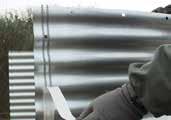
symaga.com • +34 91 726 43 04 • symaga@symaga.com 50 million m3 built Projects in 145 countries Top Project worldwide Flexibility and adaptability A reliable team for a reliable project YOUR RELIABLE PARTNER Improve silo tightness. Double Vertical Joint. · Tightness is improved. Double sealing on both sides of the screws. · Butyl rolls are supplied with double strip to improve assembly times. GRAIN TECH INDIA, Bangalore, 26-28 August, Stand K-9 VICTAM, Bangkok, Thailand 7 - 9 September, Stand 1670 VISIT US
Pet food trade association adopts ‘UK Pet Food’ as part of its new identity

The UK pet food industry’s trade association has unveiled its new identity, UK Pet Food. Previously known as the Pet Food Manufacturers’ Association, ‘UK Pet Food’ now better reflects the remit of this dynamic organisation. UK Pet Food, which has over 100 members and represents 90 percent of UK manufacturers, will continue to lead the industry agenda whilst representing the growing interests of a broad range of members.
Michael Bellingham, Chief Executive, UK Pet Food explains, “Creating a new brand identity has been an important journey for us. We value our 50 years of history, but equally we pride ourselves on being a forward-thinking organisation, embracing change and driving it forward. We were keen for our brand to capture this feeling and better reflect who we are and what we are about. Our modern name and bright new look demonstrates our evolution, embracing new members and planning for the next 50 years.”
The UK Pet Food branding focuses on a strong yellow core logo, which reflects a desire to push the industry front and centre. A suite of pet-specific sub logos exists to represent different species with their own contemporary colours. This reflects equality of representation across the different sectors within UK Pet Food, where all voices are heard.
Mr Bellingham adds, “It has been a busy year coordinating our new look alongside a new website, which you can find at ukpetfood.org. Our focus with the website was to simplify navigation to make it easier for users to find our expert-written material on pet food and nutrition. The design incorporates our new colours and ensures we are projected as the forward-thinking organisation that we are. Along with our website we have a new communications platform for engaging with our members – this will significantly enhance the service we provide and the member experience.”
UK Pet Food has expanded its membership to include affiliate organisations in the pet world opening up opportunities for more networking, collaboration and training. UK Pet Food focuses on providing pet owners and professionals with information on wet, dry and raw prepared pet food and good nutrition.
Lily’s Kitchen partners with Great Western Railway to launch the Santa Paws Express
Ajoint venture between petfood brand Lily’s Kitchen and Great Western Railway (GWR) this Christmas has resulted in a specially designed train - The Santa Paws Express - to make it easier for pet owners to travel with their pets during the Christmas season.
The train will have a sack full of treats for their four-legged travellers, courtesy of Lily’s Kitchen. Lily’s kitchen has also created a map that highlights GWR stations that have convenient areas for pet owners nearby to exercise their pets before departure to avoid any awkward accidents on the train.
Lily’s Kitchen will be providing their festive meals and treats made from only the best natural ingredients to pets onboard at a number of different locations over the Christmas period, including Oxford, Bath Spa, and Bristol.
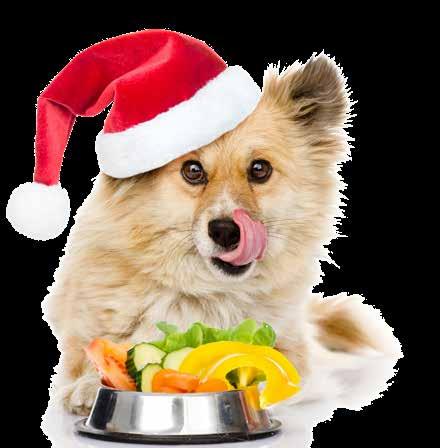
On Trains travelling to Bristol on December 7, 2022, and at Bath Spa (for visitors travelling to Bath’s famous Christmas markets) December 8, travellers will receive samples from Lily’s Kitchen.
About Lily’s Kitchen
Lily’s Kitchen is a petfood company catering to cats and dogs, focusing on creating nourishing, nutritious, and balanced meals and treats whilst being environmentally conscious and actively engaged in their community.
The ingredients consist of fresh meat and fish, fruit, vegetables (steam cooked), herbs, and botanicals. Health benefits of the ingredients and recipes used include easier digestion, optimal nutrient absorption, skin and coat health, and a healthy heart.
They create recipes for all stages of pets’ life, from puppies/ kittens who need a healthy immune system for growth and development, adult pets who need to stay bright and active, to mature pets who need highly digestible foods that give extra support for their bones and joints.
PETFOOD NEWS 12 | December 2022 - International Petfood
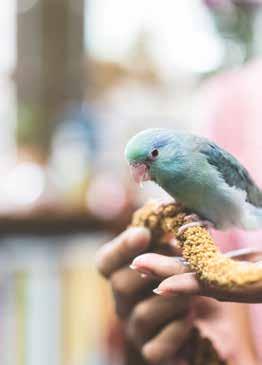


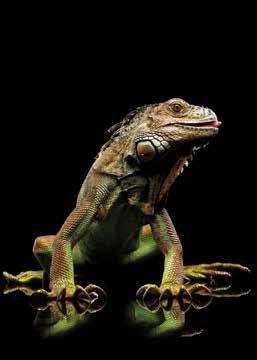

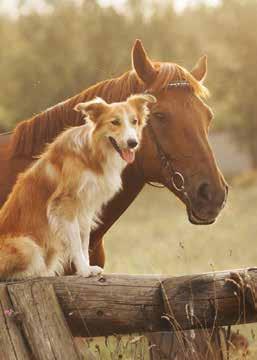

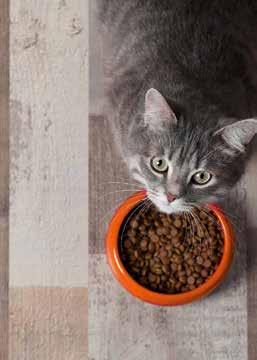

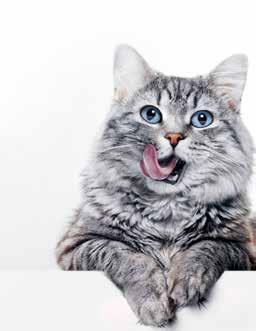



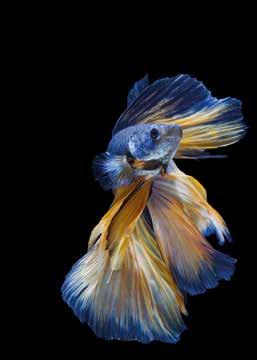





https://store.magstand.com/petfood SUBSCRIBE Available ONLINE, IN PRINT and on you favourite APP store Create an account on MAGSTAND to view all of our editions on desktop ... Use your account to sign into our app (available from your favourite app store) ... Or manage your print subscription Sustainability goes mainstream A re-invention of capitalism in the matrix of our anthropocene diet - Swift guide to the diet & nutrition, hygiene and housing requirements of aviary birds - Vegan petfood production - NIR technologies in petfood production - Rendering:The unsung hero of sustainable petfood June 2022 www.internationalpetfood.com www.perendale.com International PetFood Volume Issue 10 October 2022 Reptiles Bone Broth - Tubular drag conveyors - Alternative Proteins - Petflation October 2022 www.internationalpetfood.com www.perendale.com Download you online version: Equine nutrition - A brief guide to the multifaceted dietary needs of the horse - Safe horse feed storage - The ‘humanisation’ of petfood - The benefits of using insects in petfood - Petfood production plant: Sustaining life’s simple pleasures on an industrial scale May 2022 www.internationalpetfood.com www.perendale.com CAT FOOD 2022 A brief look at current cat food ingredient market trends - The evolution of petfoods - Multiple benefits and applications of yeast and yeast derivatives for pet nutrition - Sourcing components for petfood handling - Electrification of dryers for petfood February 2022 www.internationalpetfood.com www.perendale.com International PetFood Volume Issue August 2022 Nutrition from Nature Pet Food Plant Solution - Cat Food - Sharing Earth Animal's Wisdom on Sustainable nutrition - Sourcing Ingredients - Welfare in the Ornamental Fish Trade August 2022 www.internationalpetfood.com www.perendale.com Download you online version: IPF2208.indd 23/08/2022 09:43 PETFOOD SAFETY - Joint management & obesity in dogs - Developing effective natural nutritional support for joint ailments & weight management in canines - Insects in petfood - The continuing growth of the use of insect derived ingredients in petfood applications - Petfood technology in action - Achieving peak petfood packaging performance April 2022 www.internationalpetfood.com www.perendale.com July 2022 Petfood ingredients How they are used, moved and improved - Petfood branding solution to set tongues wagging - Working safety at height - Hammermill grinding in Petfood production - Brewer's yeast cell walls - Salmon peptides in petfood - Tubular drag conveyors www.internationalpetfood.com www.perendale.com JANUARY 2022 COP26 & the “Greening Finance” roadmap - Improving petfood drying efficiency - Process Design - from recipe to retail - Conditioning & pelleting: A focus on finding the right process & choosing the correct ingredients www.internationalpetfood.com www.perendale.com International Petfood - December 2022 | 13
Providing the right nutrition for zoo animals
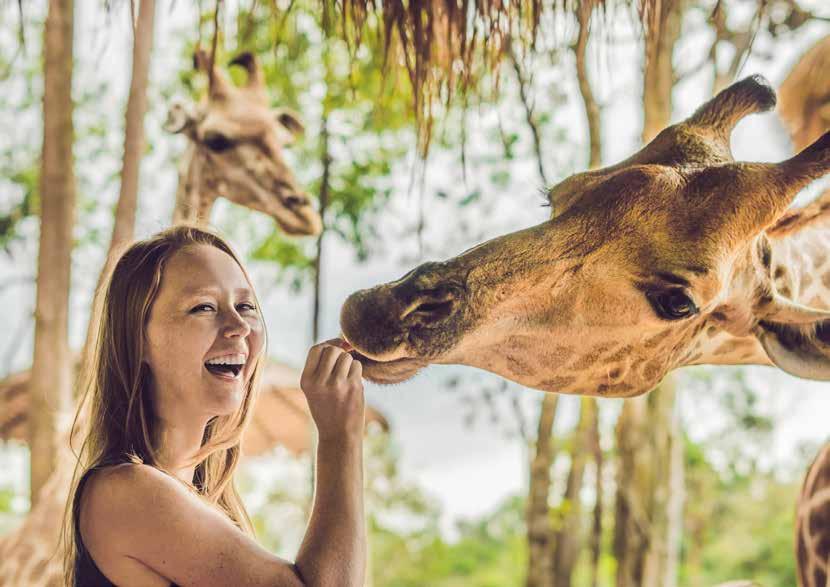 by Jyothsna Nelloolichalil, International petfood magazine, UK
by Jyothsna Nelloolichalil, International petfood magazine, UK
Zoos play a key role in conservation of animals as much as it does in education and creating awareness. Animal welfare is of utmost important in recent times considering the loss of biodiversity. The success of breeding programmes as well as the health and welfare of the animals depend on supplying the proper nutrition for the several diverse species we care for. A zoo is a shelter for numerous animals with varied nutritional needs and meeting each of them must be ideal when compared to their natural habitat.
History of feeding Zoo animals
Historically, most zoo animal nutrition was based on nutritional requirements of giraffes as they have been the most common zoo animals and this eventually ended up in zoo animals being fed incorrectly, often being given too much grass-based forage as this was most readily available. Many carnivorous animals were fed with cereal based feeds produced for the livestock production and high cereals diets can cause significant digestive issues for them such as acidosis due to rapid rumen fermentation in zoo animals. But, over the last few decades, there has been notable efforts in meeting the nutritional requirements of zoo animals.
How should zoo animals be fed?
The minimum nutrient requirements established by the National Research Council (NRC) for domestic and laboratory animals can be useful starting points in setting target nutrient levels for an exotic zoo species. Although NRC requirements are less directly
applicable to other species, they can still serve as a starting point in meeting the correct nutritional requirements for exotic zoo animal.
All food should be of good quality, spoiled or food stored for a longer period (more than one year) must not be fed. Topping off the food bowl daily is also discouraged as the uneaten food in the bottom can get spoiled, hence food and water bowls should be emptied and cleaned every day. Cafeteria style feeding is also discouraged as chances of zoo animals choosing a balanced nutritional diet when offered with different food choices are unlikely.
Feeding should take place in the morning, and additional foods should be provided throughout the day, to enhance intake of pelleted diets. The weight of every diet item to be consumed and the actual consumption should be noted. Fruit, most grains and seeds, most insects, and muscle and organ meat are poor sources of calcium, and excessive eating of these foods can cause a calcium deficiency. Insects should be fed calcium gut-loading diets with at least 12 percent-15 percent calcium. Another option is to dust the die with a calcium-phosphorus powder mixture, although it is unlikely that this will supply enough calcium.
Obesity in zoo animals is common than lack of nutrition. Ungulates, primates, and carnivores can rapidly become overweight when excess amounts of a high-quality diet are offered, particularly when activity is limited. Both adult and growing animals should be routinely weighed to monitor changes. If weighing four times a year is not possible, a body score index should be performed.
F 14 | December 2022 - International Petfood
Water for exotic and zoo animals:
Water intake should be assessed routinely but especially in animals with compromised renal function, in lizards or birds prone to gout, and in animals under conditions of high temperature or low humidity in which evaporative losses can be expected. The salt content of water should be known, because some species are less tolerant than others. Animals fed dry feeds (pellets, extrusions, hay, etc) require more water than those fed succulent feeds. Potable water should be available ad lib.
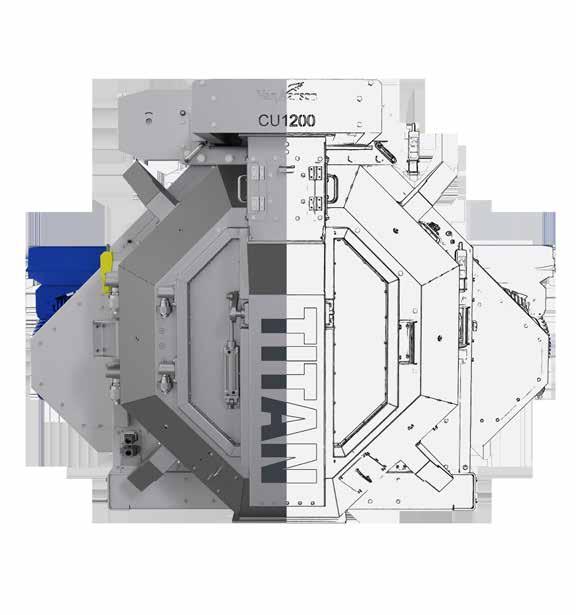
While animals in the wild get water from the food they consume, it may not be the case with zoo animals who are fed with low-moisture foods like pellets. Many reptiles, especially tropical ones, may require high levels of humidity to maintained hydrated. Some lizards, who may not be seen drinking from standing water, benefit from daily misting with warm water. Low environmental humidity (or possibly upper respiratory tract disease) may cause eye lesions in semiaquatic turtles (such as box turtles) and some tortoises, rather than vitamin A deficiency.
Nutritional supplements:
The use of nutritional supplements is popular among animal care takers although many keepers provide the animals with nutritionally complete food. If a zoo animal’s diet is lacking in a certain vitamin, a specific supplement in a certain dosage
should be suggested. Due to toxicity and nutritional imbalance, excessive supplementation of some nutrients (such as some fatsoluble vitamins, selenium, and copper) can be just as hazardous as inadequate dosage. Micronutrient supplements may be necessary for diets high in grain products and cultivated fruits and vegetables, but they come in a wide range of compositions.
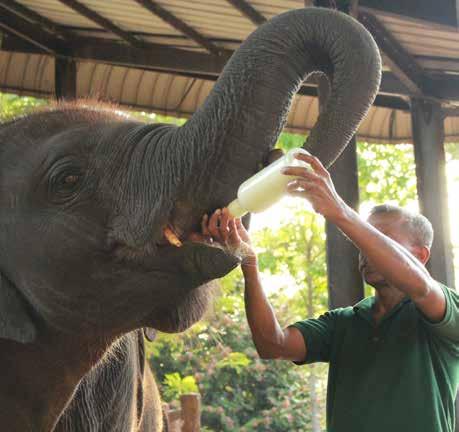
International Petfood - December 2022 | 15 F
Biotics & Pets
How pre-, pro- and postbiotics can help create a healthy gut
by Dr Rebecca Delles, Research Scientist, Alltech, USA

any have heard the age-old adage of let your medicine be your food, and your food be your medicine. Yet, with a plethora of information at our fingertips, how do we decipher what exactly is good nutrition for ourselves and our furry friends? Cats and dogs have evolved tangential to humans and currently face similar lifestyle challenges upon urbanisation. Currently, most cats and dogs are fed a high carbohydrate diet, quite dissimilar from their ancestors’ carnivorous fare. Most pet owners consider their animals to be integral members of the family, which has shifted purchasing behaviour toward more humanised food options, such as non-GMOs, grain-free and organic. Despite the emergence of new market categories, such as premiumisation and functional foods, the root commonality is overall animal health and wellness.
The mammalian gastrointestinal tract (GI) is colonised by a dynamic collection of microorganisms, commonly known as the gut microbiota, and plays a key role in physiological and pathological conditions. The composition of the gut microbiota varies by individual and is impacted by a variety of factors, including diet, antibiotic use, GI disease, age, genetics and living environment. Historically, the role of the GI tract was primarily associated with nutrient absorption and waste removal. However, knowledge regarding the gut microbiota has expanded, recognising its association with a wide range of physiological processes ranging from immunity to metabolism to neurobehavioural development. More specifically, the role of the gut microbiota on host immunity and its impact on overall wellness has been an evolving field for both humans and companion animals alike. The pandemic increased awareness of the
Mrelationship between nutrition, immunity and overall health in both people and animals. As a result, this increased consciousness of immunity and wellness has resulted in the intertwining of trends with the premiumisation and humanisation of pet foods lending toward targeted nutrition with key drivers in gut health and immunity.
Answering the big question
Consumer trends in the pet food market have led to an expansion in food and supplements utilising functional ingredients specific to gut health. So how does one know which gut health offering is better for your dog or cat? Regarding pet food, when broken down into broad categories, there are the macronutrients (i.e., carbohydrates, fats, and proteins) and micronutrients, such as vitamins, minerals and functional ingredients. Functional ingredients associated with gut health typically fall into either prebiotic, probiotics or postbiotics. Prebiotics stimulate the growth of healthy bacteria. Typically, these come from the indigestible fibre portions within food or formulated into the food product. When feeding prebiotics, the goal is to provide functional components that will increase the populations of good bacteria in the gut and promote microbial diversity. Mannan oligosaccharide products (MOS), such as Bio-Mos® and Actigen®, have been shown to elicit a positive impact on gut health in a wide variety of species ranging from shrimp to dogs. Bio-Mos and Actigen have been shown to benefit gut health through reducing the level of pathogenic bacteria within the GI tract, enhancing the growth of beneficial bacterial populations, and modulating the lining of the GI tract. Specifically, the shift in bacterial populations towards more favourable species such as Lactobacillus and Bifidobacterium occurs through the removal of several pathogenic bacteria species.
Additionally, MOS has been shown to stimulate mucin
16 | December 2022 - International Petfood F
production by goblet cells, which forms a protective layer of gel-like mucus over the epithelial surface. Mucins also aid in the binding and clearing of bacteria from the intestine. Since the GI epithelial surface comprises only a single layer of cells, it relies on a dynamic and interactive system between mucus layers, intestinal epithelial cells and the microbiota to maintain intestinal homeostasis. As such, MOS products like Actigen work to optimise GI health and function through a process of microbial repair and restoration.
Probiotics are comprised of live and/or deactivated bacteria that elicit a health benefit to the host when administered in adequate amounts. Most probiotic strains used in companion animals typically belong to lactic acid bacteria (LAB). Probiotics are proposed to benefit the host through the production of antimicrobial compounds, enhancing the growth of beneficial endogenous microorganisms, outcompeting pathogenic microbes for nutrients and adhesion sites along the GI tract, and altering the microbial metabolism. While LAB comprise a small portion of the canine gut microbiome, they have been shown to modify the intestinal microbial ecosystem when incorporated into the diet. Thus, the use of products such as Yea-Sacc® and LactoSacc™ may improve intestinal health in companion animals and could help mitigate the occurrence of GI dysfunctions, such as dysbiosis. Dysbiosis is the alteration of the gut microbiota that favours pathogenic bacterial species that promote intestinal inflammation and is associated with acute and chronic GI disorders. Incorporating functional ingredients, such as probiotics, may serve as a useful tool to either aid the recovery of dysbiosis or serve as a strategy to manipulate the gut microbiota that favours a healthy GI state.
The breakdown of prebiotics by probiotics forms postbiotics,
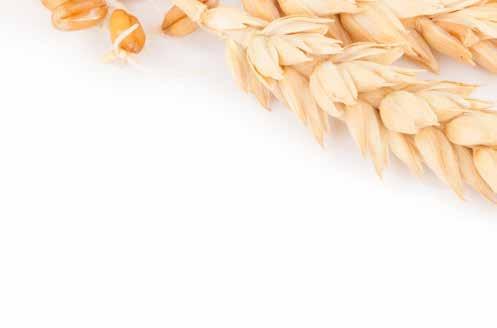


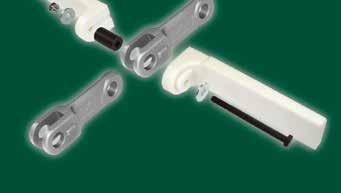






which are beneficial bioactive compounds that promote a healthy GI system. While the area of postbiotics is relatively new, recent research supports the interaction between postbiotic metabolites with the intestinal epithelium and GI immunity. The combination of natural compounds, including short-chain fatty acids, organic minerals and functional yeast components found in products like Tynagen™, has been shown to promote a healthy gut flora and maintain effective immune responses, even under stress conditions. Thus, the inclusion of postbiotics may provide an additional benefit in animals prone to GI distress.
Conclusion


Improving the well-being of companion animals includes the incorporation of a nutritionally balanced diet with an active lifestyle. While there is a variety of food products and nutritional supplements that aim to promote a healthy GI system, evidence suggests that the inclusion of prebiotics, probiotics, postbiotics or a combination of all three may be useful in fostering canine and feline wellness. Nevertheless, the incorporation of pre-, pro- and postbiotics may act in a similar manner to Alltech’s Seed, Feed and Weed program. Probiotics act to seed the gut, while prebiotics feed the gut, and a combination of pre-, proand postbiotics aim to weed out pathogenic bacteria, resulting in a healthier GI system. While there is growing interest and knowledge on the potential therapeutic effects of the modification of the intestinal microbiota from pre-, pro- and postbiotics, further exploration of the canine and feline microbiota is needed.

Proven Performance Put Your Conveyor on Pole Position! • Reduce Downtime & Maintenance Costs • Quick and Easy Chain Assembly • Bolt on Flight Replacement (No Welding) • Forged and Hardened Chain Links DOWNTIME IS A RACE... TIME IS MONEY 'N' Go™ Drag Conveyor Chain www.go4b.com www.go4b.com 4B GROUP Bolt'n'Go Advet (Half Page) - No Email_Layout 1 30/06/2015 12:17 Page 1
International Petfood - December 2022 | 17 F
Wheat germ foods for koi F
by Dr David Pool, Founder of FishScience, UK
Wheat germ-rich foods have always been popular amongst koi enthusiasts as the winter months approach. Japanese koi keepers have used these foods for generations and hobbyists across the world have followed suit.

In many cases, the reason hobbyists transition to a ‘winter diet’ goes unquestioned as the results speak for themselves. However, there is a rich science behind the importance of ‘wheat germ’ foods as temperatures begin to cool.
What is wheat germ?
Wheat germ is the name given to a small part of the wheat seed. It is the part of the seed that germinates (hence the name) and allows the wheat plant to start growing. The wheat germ is surrounded by the rest of the seed, which provides the initial food source for the growing seedling. To use this food source, the wheat germ has to be rich in certain vitamins, minerals and essential fatty acids and proteins.
The benefits of wheat germ to koi
The rich and concentrated nutrients contained within wheat germ have many benefits when consumed by koi. For example, wheat germ is rich in:
Vitamin E - This vitamin is important for protecting cell membranes, allowing the effective use of fats and improving the overall health and vigour of Koi. It is also important for the development of the reproductive organs and therefore benefits the fertility of the fish.
Vitamin C - Essential for the efficient use of other nutrients and skeletal formation. In combination with vitamin E, it helps koi overcome problems associated with stress.
Fatty acids – The important fatty acids contained within wheat
germ are used to form the cell walls, improve the digestion of other nutrients and as a storable energy source. Wheat germ is particularly rich in linoleic acid, which is essential for tissue repair.
Amino acids – Wheat germ contains Lysine, an important component of the diet to allow tissue repair and formation as well as aiding the immune system.
Wheat germ, as an ingredient in a balanced nutritional food, has important benefits to people as well as koi. Health food stores have recognized these benefits to humans and sell large amounts of wheat germ in a variety of different forms.
Koi foods vary considerably in the amount of wheat germ that they contain. It is an expensive component of the food – after all, only 5 percent of the wheat seed is the germ so the rest must be discarded. As a result, some of the less expensive ‘wheat germ’ foods contain less than 2 or 3 percent wheat germ, whereas high-quality wheat germ foods may contain six times this quantity. European pet food regulations help us to understand the ingredients of a fish food from its description on the label.
Winter feeding for koi
The nutritional requirements of koi vary considerably throughout the year, hence the need for different diets. For example, protein is necessary for growth, but can only be used at warm water temperatures (over 15°C). Therefore, in summer, we feed a high-protein food because the koi can use the protein to grow. Whereas, in winter, a lower protein food is sufficient because the koi are less active and not increasing in size.
Feeding protein-rich foods at low temperatures can even harm koi. Below approximately 10°C few if any of the proteins will be used for growth. Some may be used inefficiently to produce energy for movement etc, but the majority will pass straight through the fish. The resultant protein-rich waste can have adverse effects on the water quality as it decomposes.
In addition, the digestion of proteins into amino acids starts at
A new look at an old tradition 18 | December 2022 - International Petfood
the front of the intestine where the enzyme Pepsin gets to work. Pepsin works best in acidic conditions where the pH is 1.5 to 2. If a koi consumes a diet rich in protein and then the water temperature drops, the acidic stomach conditions, together with raised levels of Pepsin, can remain in the early intestine for a prolonged period. This can expose the koi to the risk of stomach ulceration and future infection.
To avoid these two problems, many koi keepers simply stop feeding their fish when the water temperature falls below 10°C. The theory is that the fish can obtain what little nutrition they require from within the pond and from their stored food reserves. Whilst this may be a possibility in a natural, planted pond, there is unlikely to be sufficient food in a koi pond. The fish would therefore have to rely on stored reserves in the form of fat and muscle tissue. Not feeding over a 3 – 4 month winter period would lead to the koi being thinner and weaker in the spring, and consequently more susceptible to disease attack later in the year.
Do koi feed at low temperatures?

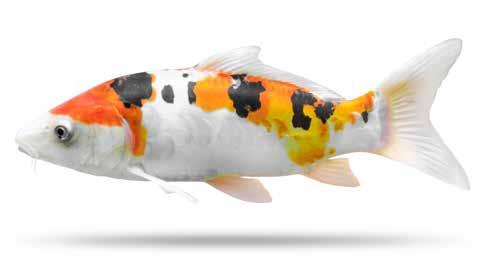
The behaviour of koi is greatly affected by the temperature of the water they are swimming in. The colder the water, the less active they are and the less inclined they will be to feed. However, they can acclimate to low temperatures. Even at temperatures of 5 – 6°C, koi can be seen to rise to the water surface to feed. However, their activities are greatly influenced by changes in the water temperature. If the water temperature quickly falls from 12°C to 10°C, the koi will stop feeding for a while whilst their bodies get used to the lower temperature. By contrast, if the water temperature rises from 5°C to 7°C the koi may feed quite actively.
In the winter, and particularly in shallower ponds, the temperature changes described can occur every day, with an increase during the day and a fall at night. It makes sense, therefore, not to feed your koi too late in the day as it is likely that the water temperature will start to fall before the fish have had a chance to digest the food.
Good quality wheat germ foods are formed largely from plant ingredients and are characterised by a higher roughage content. The digestible component of the food is quickly absorbed by the fish, but importantly, the remaining ingredients pass more quickly through the intestine. The higher plant content will also reduce the amount of Pepsin produced in the front of the intestine and result in less acidic conditions.
Feeding such a diet to your koi throughout the winter will support the condition of the fish but will have no impact on their growth. The carbohydrates contained within the food are an important energy source for the fish and prevent them from having to use their reserves. As for the wheat germ – it will allow better utilization of the other ingredients in the food as well as being a valuable food source in itself.
International Petfood - December 2022 | 19 F
Benefits of winter-feeding on spring health
Providing koi with suitable food during the winter will have a beneficial effect on the health of the fish in the spring. If the fish have not had to use up their stored food reserves, they will be in better physical condition. However, there is also evidence that the amino acids in wheat germ can strengthen the immune system of the fish and ensure they can counter disease organisms which can cause problems as the water temperatures rise in spring.
In extreme cases, not feeding koi through a long winter can lead to vitamin and mineral deficiencies. This can manifest itself in many ways, including lethargy, lack of condition, susceptibility to disease etc. Providing suitable food in small quantities can help combat these issues.
The important aspect of winter feeding is that you should feed very sparingly. As much as the fish will eat in 2 – 3 minutes is sufficient. The keeper must remember that they are not feeding to encourage growth or enhance colouration, simply to maintain the health of the koi.

Floating vs sinking food
There is much debate over the use of sinking or floating wheat germ foods during the winter. Original wheat germ foods were mostly sinking, with the idea being that the fish were lethargic and would not be interested in rising to the water surface to feed. Although feeding a sinking food will get to the bottom of the pond and the fish will feed on it, any uneaten food is very difficult to remove without disturbing the fish. Keepers should avoid any disturbances to their koi during the winter period. Although there are two very plausible arguments, FishScience was developed to provide floating pellets. If the fish are not active enough to rise to the water surface to feed, it is a good indication that they should not be fed. In addition, removing any uneaten food is much easier and less intrusive when it is at the surface.
Information for keepers
Koi should be fed during the winter. It is an important aspect of koi care and can help to keep them healthy and allow them to overcome the dangers of spring. The food should be vegetable based with a good wheat germ content. This will ensure the fish can utilize it as effectively as possible. As with all feeding, keepers mustn’t overfeed – a few sticks or pellets per fish is sufficient.
‘With Wheat germ’ means there is at least 4 percent wheat germ in the food
F 20 | December 2022 - International Petfood
‘Rich (or High) in Wheat germ’ means there is at least 14 percent wheat germ in the food ‘Wheat Germ food’ means at least 26 percent wheat germ in the food.
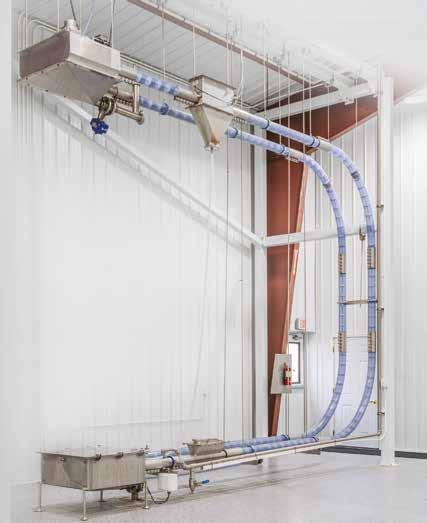

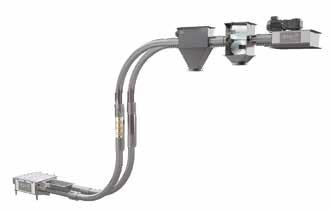



Decades of Global Experience. 50 Years in Business 66 Countries Served 1,000+ Products Moved 32,000+ Conveyors Commissioned operation our systems are hard to compete against. Cablevey Conveyors Gentle Clean Reliable Conveying The Heart of the System CABLE & DISCS Cablevey® Conveyors is a registered trademark of Intraco, Inc. 07/2022 Worldwide Experts in Cable and Disc Conveying Solutions +1(641) 673-8451 www.cablevey.com www.cablevey.com +1(641) 673-8451 info@cablevey.com Course held In-Person & Live-Online Via Zoom Course Dates: 1/30 - 2/3, 2023 Early Bird Registration Rates: $1,495.00 In-person | $995.00 live-online Early Bird rates end 1/8/2023 32nd Annual Short Course: Feeds and Pet Food Extrusion This live-online course offers an extensive look into the principles and characteristics of feed processing, as well as support systems for effective processing 4.5-day short course with leading instructors from around the world. Participants completing the course will be awarded a Certificate and are eligible for 30 Professional Development Hours (PDHs). Ready to Register? Click HERE Want to see more about onsite course activities? Click the icon here! This course brought to you by: Questions? Contact Dr. Mian Riaz F
Agronutris is the first French biotech company specialised in black soldier fly rearing and transformation into high quality proteins. With more than 10 years of R&D, Agronutris is strongly engaged in order to provide high quality products for the feed and food sectors.
As a human-centered organisation, it acts in collaboration with its partners to build a fair and sustainable agri-food industry. Its mission is to feed and preserve the world in a sustainable way.
by Chris Haacke, Business Development Director, Agronutris, France
The world population is growing fast and is expected to achieve 9.5 billion people by 2050. To cope with this rapid growth, humanity will have to produce more proteins in the next decades.
At the same time, the petfood sector is growing fast due to the growing number of pets and needs more high quality sustainably produced proteins in order to respond to pets’ nutrition needs. And while the demand is getting higher and more specific, the sector is experiencing significant supply chain disruptions. The tensions the human food and animal feed sectors are facing today will only continue to increase in the future, implying stronger competition and higher prices.
Today, alternative proteins can be key in the further development of the petfood sector, and insects are definitely part of the solution. A high quality animal protein with a limited impact on climate change and biodiversity can allow the petfood industry to continue to thrive and grow in a sustainable way.
France is playing a key role in the development of this industry. The French actors are currently industrialising their activities in order to answer the growing needs of the pet food industry for novel ingredients. Among them, Agronutris is launching its first factory, offering sustainable insect-based proteins produced thanks to locally sourced by-products of the agro-industry.
France, the promised land for insect rearing



Silicon Valley in the USA is known for its high tech activities, Germany is strongly recognized for its car industry, Norway is known for its quality salmon... and while France is already recognized for its cheese and wines, the country adds a new string to its bow, with the insect industry developing rapidly!
Why? The French agro industry offers large volumes of by-products that can be used to feed insects. The French government is also a driving force for the development of the sector. It supports the French actors by offering favourable regulations and financial support, playing an important role in the development of the industry. In addition, the strong R&D
culture in French education allows companies to build strong teams able to implement ambitious research programs. Setting up such a virtuous circle from an emerging industry is enabling the emergence of a real competitive advantage for the country.
The insect protein market is still in the early stages of growth. Research and development activities are underway to develop insect protein-based products, and these are only expected to accelerate, creating a valuable knowledge ecosystem. In France, this new ecosystem is made of a few strong actors, where competition pushes all of them to accelerate their scale-up. As evidence of this, France is the country with the most companies able to raise more than €50 million and is in the top three countries worldwide in terms of the number of start-ups in agtech and foodtech.
Agronutris; pioneering in the emerging industry of insect protein-based products


Created in 2011, Agronutris is a French biotech company specialised in rearing and transforming insects into proteins for animal nutrition. Eager to become one of the leaders of the industry, the company has raised more than 100 million euros in September 2021 and is currently launching its first industrial site in Rethel, in the North-East of France, and plans to deliver its first volumes at the end of Q2-2023. In the longer-term, Agronutris is planning to build multiple new factories worldwide by 2030.
Benefiting from over 10 years of experience in entomology and gathering experts from the Agro-Industry, the team of 50+ highly skilled professionals plans to offer high quality products with a low environmental impact for the pet food, aquaculture, and animal feed markets.
After having bred and evaluated multiple species of insects, the team selected the black soldier fly, having concluded that it offers the best advantages from an environmental, economic and technical perspective. With a shorter life cycle, its ability to valorise a large range of by-products, and with the quality of its protein, the black soldier fly can indeed play a key role in the implementation of a more circular economy, while keeping the quality of the products at high levels.
F 22 | December 2022 - International Petfood
Finally, as a Human-centred company, Agronutris is committed to building strong, transparent and long-term relationships with all its partners, in order to develop, with them, a more fair and sustainable agri-food industry.
The Black Soldier Fly; an answer to the evolving requirements for the pet food

With an increased worldwide focus on achieving net-zero emissions, the shift to eco-friendly, sustainable products brings significant opportunities in paying more attention to the edible insect’s sector.
According to the FAO: Insects produced for food emit considerably less greenhouse gases (GHGs) than most livestock. Ammonia emissions from insect farming are much lower than those from conventional livestock farming.
Insect farming is not necessarily land-based and increasing production does not require extensive land clearance. As a comparison, in terms of impact, soybeans are grown at the expense of the Amazon rainforest, and fishmeal’s production negatively affects global fish stocks.
Insects have a high feed conversion capacity. They can be reared on organic by-products, thus reducing environmental contamination while recovering waste. They also need way less water than other protein providers.
Because they are cold-blooded, insects are very efficient at converting their food into protein.
And indeed, insects can be an attractive source for highly qualitativeprotein animal feed (van Huis, 2013). Studies have reported that insect meal, fish meal and soybean meal are quite similar in their amino acid profiles (Barroso et al., 2014; Pinotti et al., 2019).
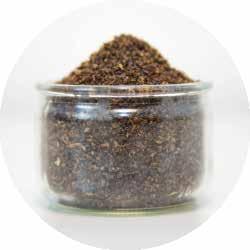


Using bioconversion to feed and preserve the world






Every year, more than one third of the world’s food production is lost. This represents 1.3 billion tonnes of waste. It is generated throughout the whole value chain (farming, transformation, distribution, consumption). Only a small quantity of this volume is effectively recycled. In some regions, most of it ends its life in landfills or incinerators. Insects, and especially the black soldier fly, constitute a new promising recycling solution.
At the same time, demographic growth, climate change and new digital technologies strongly affect our world and call for a paradigm shift. Beyond bringing innovative technical solutions, these changes invite us to create new kinds of mission-driven organisations based on freedom, trust and shared governance, and conscious of their impact.
Agronutris has made the choice to move towards this new kind of holistic living organisation. As a team, Agronutris aims to work every day to give rise to a sustainable world fed and preserved through bioconversion in order to develop a fair and sustainable agri-food industry, in line with the company’s stakeholders.
Leaders in Microwave Moisture Measurement



















Hydro-Probe XT Hoppers, chutes, belt conveyors Hydro-Mix XT Mixers, conveyors, Ducting System Hydro-Mix XT-EX Certified for use in ATEX, IECEx and NEC/CSA Hazardous Locations (Dust) Hydro-Mix HT Mixers, conveyors, Ducting System, High Temperature enquiries@hydronix.com www.hydronix.com Contact us for more details Hydronix-Petfood-Advert Jan 2022 215x140mm.indd 1 20/12/2021 19:04
World
International Petfood - December 2022 | 23
ZOOPAN
Lighting a way to a better future
Zoopan is a Portuguese animal health and nutrition company, with their core business in the veterinary market. It was founded in 1980, in Azambuja, Portugal. Gradually expanding over the years, Zoopan started distributing worldwide in 1998, dealing with complementary, dietetic, mineral feed, mycotoxin binders, vitamin complexes and veterinary medicines.
The company was the first Portuguese company to obtain a Good Manufacturing Practices (GMP) certification in 2008 and have state of the art facilities for the production of medicated premixes, oral solutions, and water-soluble powders, based on scientific studies in nutrition.
Zoopan are also certified by the international organization for standardisation (ISO) – which guarantees efficiency in both production and delivery of products/ services. Additionally, they have a FAMI Qs certification – the first code of good practice for additives and premixtures used in animal feed to obtain the official recognition of the European commission.
The animals primarily supported by Zoopan’s expert health and nutrition products include poultry, ruminants, swine, rabbits, horses, and snails. The company has been active for 38 years,
produced 250 products in 8 countries, and serve 300 clients.
Zoopan strives to provides the best technical indices, in growth, conversion rates, highest quality products at lowest price. They provide solutions in technical expertise in nutrition and animal health, internal laboratory, additives, premixes and formulation services, and quality control and regulatory support. Their services support all along various areas of the feed cycle, from technical support and performance monitoring at farm level, all the way to quality control of raw materials.
Now, Zoopan have branched out and recently launched a petfood brand, called Petuga.

Petuga is a Portuguese company, providing top quality and naturally selected ingredients for pet food. Zoopan developed Petuga using their knowledge and expertise in nutrition and diet formulation on farm animals. Studies indicated there was a growing concern with pet welfare, and pet owners were particularly interested in the palatability, skin, and coat health, digestive problems (as well as prevention of metabolic problems), stool odour, joint health, and mobility.
Petuga guarantees higher levels of fresh meat and chondroprotectors, and
the use of minerals of organic origin.
Palatability is core focus of Petuga, as all ingredients are carefully selected, appetence being essential to this food selection. They are adamant about choosing natural and highquality ingredients, such as fresh meat for their dog food, or fresh sardines for cat food. Their products promote intestinal health, including zinc amino acid chelate, MOS, beet pulp, rice and locust beans, and yucca shidigera.
The pet food also contains high levels of glucosamine and chondroitin, which slow the progression of joint and cartilage degeneration. And the supply of zinc and manganese under an organic form has positives impacts on nail hardness, antioxidant activity and cell division, what is great in helping promote the growth and repair of paw pads.
The nutritional contents contribute towards healthy skin and a shiny coat, enhancing wound health and skin integrity. Petuga also contains minerals supporting the immune system, and high levels of protein to help growth and healthy development in bones and joints.
Petuga products are on sale in specialised stores (online and physical) and will soon be available in the retail market.
24 | December 2022 - International Petfood Industry PROFILE








3-5 OCTOBER 2023 NEW! SÃO PAULO BRAZIL LATIN AMERICA’S LARGEST DEDICATED EVENT FOR THE ANIMAL FEED AND GRAIN PROCESSING INDUSTRIES • Animal Feed • Agua Feed • Pet food • Poultry feed • Flour milling • Grain processing, handling & storage MORE INFORMATION � NICKMOUTHAAN@VICTAM.COM � +31 6 2126 4398 � WWW.VICTAMLATAM.COM MORE INFORMATION Scan the QR code or visit victamlatam.com FOUNDING COMPANIES
Industry Training
January 9-13, 2023 will see the ‘Pet Food Formulation for commercial production’ virtual training event take place, hosted by The Department of grain science and industry (IGP) and Kansas State University (KSU).


The training event will be held by Greg Aldrich, Associate professor, and pet food program director at KSU. Other faculty will also be involved throughout, to provide further information on processing, nutrition, sensory and regulatory affairs. There will also be representatives from major formulation software companies to assistant attendees with installation, testing and use of their software. Teaching assistant (consisted of alumni from the pet food lab at KSU) will be available to help students during formulation exercises in the breakout sessions.
The course aims to provide students with a good working knowledge of ingredients, processes, and the software necessary to create new products. Topics covered will include ingredients, transportation and storage factors involved with marketing effective foods for pets. Student will also be able to revise existing

formulas and perform business and production analysis, learn about necessary software for new products, raw ingredients, fundamental principles of animal nutrition (specifically dog and cat), and regulatory constraints.
The course will give an opportunity to gain skills in software for formulating effective dry extruded, baked, and canned pet foods and treats, as well as exploring ingredient options to provide new product competitive advantages. Attendees will learn how to create formula’s from ‘concepts’, ‘reverse engineer existing pet foods’, and ‘troubleshoot pet food production and quality control compliance issues’, as well as how to formulate premixes and supplements to support new formats.
The course costs US$1500, and runs for five days, starting at 8:30am and finishing 4:30pm.
TRAINING
Your industry training platform www.onlinemillingschool.com Learn more – Learn onsite Enroll in the 12-week Course 26 | December 2022 - International Petfood
Troubleshooting
Part 10: The extruder barrel continued
As referenced earlier dies is a topic and this section is a good area to address and discuss this topic. The final die is the device that gives the petfood its final shape, important to the pet owner as it shows the care and quality put into these products by the producer. The grind of the ingredients has a big effect on the final appearance and in many situations finer grinding allows for expansion control. Lighter density or more expansion is possible on finely ground formulations.
Product final shapes are affected by the die hole design and location. Perfect shapes and evenly sized kibbles require attention to the die design. Die holes depending on the petfood product have different land lengths, the straight portion of the die hole which is on the exit end of the die hole. Normally the die hole has a tapered section before the straight land length section of the die hole. A short land length yields more radial expansion, more rounded expanded kibbles, while longer land lengths promote axial expansion or expansion directly out from the extruder face. This is why short land lengths are usually used in defined shaped products such as a cross shaped catfood and other intricate shapes
Die situations usually discussed are surging in the extruder, rough surface on the kibble, poor cutting of the kibble causing fines, broken kibbles and a wedge-shaped product. Surging can be caused by the wrong open area for the tonnage being produced per hour. Typically, about 250 mm squared per ton per hour open area is used for expanded kibbles. Denser or less expanded products would have a bit more open area per ton. Rough surface of the kibble is usually a sign your land length is too long. Poor cut can be due to dull knives, wear of the actual die hole, distance the knife is from the die when cutting and the knives not being parallel to the die face. Wear of the die holes is seen when the opposite side of the die hole from the direction of knife rotation is dished out from time as the extrudate will wear this area due to the friction along this side of the die hole from the cutting process. Eventually circular channels will be worn in the die face as this wear continues. Wedging is when the kibbles are not of an even thickness, not normally seen in expanded round kibbles but in the shaped and larger diameter round products. Usually this is due to the hole locations to each other as the flow of the extrudate is flowing at a higher velocity on one side of the die hole yielding a wedge-shaped product. In this case the rearrangement of the die holes for even flow through each hole is needed to correct this condition
Previously on Troubleshooting...
1. Density
An examination of product density and its relationship with moisture levels, heating, cooling feeder screw rate and automation.
2. Non-uniform and rough appearance
A guide to understanding the science involved in improving the art of making products of all the same size.
3. Extrusion dies
This article takes a look at aspects of the process including high, medium and low shear as well the adjustments required when producing feed for small mammals.
4. Dryers
The dryer is without a doubt one of the machines in the system which greatly impacts the bottom line.
5. The Extruder Barrel - Part 1
Forming extruders are used for some select products –thus this part of the discussion centres on single and twin designs.
6. Cook in the Extruder Barrel – part 2
As discussed last month, the extruder barrel has a number of functions, but the main goal is to finalise the cook, yield the desired shape with the density target.
7. Coating
The coating process has a few areas of importance, with this edition of ‘Troubleshooting’ exploring the most important of these.
8. Expanded cat food
Dry expanded cat food production is similar to dog food production, but there are some differences, with this edition exploring a choice selection of these.
9. Extrusion during operation
This month we discuss steam input into the conditioner. During the water addition process, the steam is usually in the two-bar range.
TROUBLESHOOTING
International Petfood - December 2022 | 27
Innovations this month
December 2022
This month’s Production Showcase section features equipment and ingredients that will help in the production of petfood, taking you right from the recipe book, right up until until your product is ready to leave your factory door.
If you would like your product or service to appear on this page in a future edition of International Petfood magazine, then please contact us at editorial@perendale.co.uk

Forming Extruders by Wenger

Low shear, sanitary and thermally efficient single screw forming extruders are designed for the production of many delicately formed and shaped food products. For flaked cereals, the forming extruder receives material from the twin screw extruder, while jacketed barrels and hollow flight screws permit cooling of the cooked material to form cereal beads suitable for flaking. It has extruder features that optimize process stability and enhance versatility and each component is engineered specific for user application. It can also produce High Moisture Meat Analogs (HMMA), which are plant-based products designed to mimic whole muscle meat. They can be created to exhibit similar characteristics for moisture, protein and fat contents
It can reduce equipment, labour and energy costs and space requirements. Advantages over conventional baking for gluten-free breading and relies on protein development and the expansion of starch fraction in the cereal grain instead of fermentation.
https://wenger.com/extruders-dryers/extruders/forming-extruders
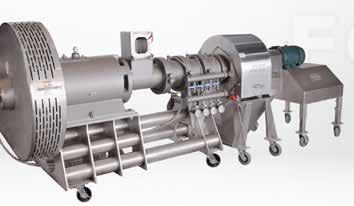


PRODUCTION
Made in Britain, Trusted Worldwide. We are Laboratory Inline OLM N H ® Portable WE PELLETS (not dust) Download your online version We invite you to use the code below for a free edition of our November magazine either mailed to you or via our App Use coupon code: IPFZOO 28 | December 2022 - International Petfood
VIB-CHECKPOINT© by Vibronet
VIB-CHECKPOINT© is a precise continuous control system for hectolitre weight (specific weight/ test weight/ volume weight/ bulk density), temperature, moisture and protein (option) of all free flowing granulated materials such as cereals, pellets, etc. at raw material intake and for blending in the production process. The system works fully automated and guarantees laboratory results at online operating conditions.
Sensors measure the temperature and initial moisture content of the product. The hectolitre weight is measured batchwise within a fixed time interval.
The microprocessor determines the current hectolitre value, as well as its average accumulated value based on this measurement and on the data from the temperature and moisture sensors.
The system consists of a control panel with colour touch screen with easy menu guidance, as well as a stainless steel measuring section.
https://vibronet.com/products/ raw-material-control-andtreatment/vib-checkpoint/
Drum Coating Machine by PLP Systems


The coating system DRUM COATER is a complete machine, able to coat in line pellets, kibbles, potatoes sticks, cubed vegetables, oat flakes, corn flakes, puffed rice, cereals, rice etc.
It is used for the treatment and tanning of seeds or for the addition of pesticides, for the addition of liquid additives such as enzymes, fat, digest, spices, oil, antibiotics, vitamins, etc and adding powder additives such as flavours, spices, salt, cocoa, etc.
The drum has a system valve on the outlet, allowing small batches of product to be mixed with a longer retention time. This ensures an excellent coating over the entire surface of the product, even with small percentages of additive.
https://plp-systems.com/systems-and-machinery/powders-coating/drumcoating-machine/
6400 series Mixer Grinder by Thompson
The Thompson 6000 Series mixer grinders are heavy duty industrial machines designed specifically for large volume mixing and grinding. Built to Thompson’s high standards of construction and finish, the 6000 Series delivers high performance and reliability consistently. Thompson mixer grinders are used extensively in many high production facilities.
The 6000 Series mixer grinders have the capacity to grind fresh meat, frozen meat (40mm cubed or flaked at -10° Celsius) and other various products.

Heavy duty industrial machines, with strong frame construction, the product is fully seam welded inside and outside the bowl. It is manufactured to withstand the demands of high-volume production.
The 6000 Series mixer grinder cutting systems are driven by high-performance motors through independent helical reduction gear units. The motor size is determined by the model and the customer product processing requirements, they may vary from 21-21 kW 2 speed to 37kW inverter driven option.
https://windsorfoodmachinery.com/product/thompson-6400-mixer-grinder/
SEE YOUR PRODUCTS IN THIS MAGAZINE
If you produce a product that you think we should feature in International Petfood magazine, please get in touch

To be considered for inclusion in the magazine please; Email: editorial@perendale.co.uk
Include 75 words about the product along with a high resolution image and a web link to more information about the product in your email
Electric Actuated Sanitary Ball Valves by Valworx

Valworx multi-voltage electric actuated sanitary ball valves are typically used for food, beverage, pharmaceutical, personal care and pet care applications where 3-A sanitary construction is required, as well as for utility, process and corrosive environment applications where quick clamp applications are needed. Highly polished internals (8- 12 Ra finish) and virgin PTFE cavity-filled ball seats are standard.
Factory-installed Digital Positioning (DPS) option converts ON/OFF to modulating operation using a 4- 20mA or 0- 10VDC input signal.
Battery Safe Return (BSR) option powers the valve closed (Normally Closed) in the event of a loss of external power. Can also be set to Normally Open.
https://www.valworx.com/category/electric-actuated-sanitary-ballvalves-multi-voltage
FOCUS
International Petfood - December 2022 | 29
2022 ILDEX Indonesia
As expected, the fifth edition of the international livestock, dairy, meat processing, and aquaculture exposition (ILDEX) in Indonesia was a success and filled the hall with quality trade participants. The shows welcomed 8000+ trade participants from 28+ countries. Additionally, the conference sessions were a hit, with over 1,665+ delegates and 75+ speakers from 11+ countries who presented during the three days of the show.

At ILDEX Indonesia 2022, over 55 percent of the total exhibitors were international brands, meeting the key concept of the show, which was to connect international investors with local distributors and buyers and expand their business across countries. More than 135+ companies from 25+ countries showcased their products and services. The exhibition halls were divided into zones representing four main industrial sectors, Animal Health, Feed Ingredients/Additives, Farm Production, and Meat Processing/Handling, bringing together stakeholders, manufacturers, importers and exporters, and professionals.
“At ILDEX Indonesia, we execute and internationalize trade shows and conferences from animal production and processing to technology, from agriculture to innovations, and from pets to medical and laboratory sectors. We apply its concepts and know-how across industries and in all Asian countries. Through our international network and global reach, we build and expand our marketplaces in Indonesia to meet the people’s demand, the country’s demand, as well as a regional demand.” said Mr. Igor
Palka, Managing Director, VNU Asia Pacific.
The show started with an opening ceremony on the first day on the
and international brands.
On the fairground, participants from Indonesia and overseas discussed their business opportunities. The official opening event and the VIP tours were also crowded with industry professionals and buyers. Apart from that, the conference sessions were presented in both English and Bahasa, with attractive topics for overseas and local audiences.
Buyer firms ILDEX, the potential market of investment ILDEX Indonesia created another eventful day as the exhibition was abuzz with activity, on-site demonstrations, and presentations on the latest smart farming solutions and high technology for livestock and Aquaculture businesses, both in the exhibition booths and with the knowledge sharing from the technical seminar sessions.
Potential buyers from the ASEAN countries visited the show and ran the business matching with our exhibitors. More than 40+ international buyers attended from Malaysia, Thailand, Vietnam, Brunei, India, and more; the
exhibition floor at the ICE in Jakarta. The opening speech was given by Mr. Widianto Dwi Surya, President Director of PT. Permata Kreasi Media, Mr. Igor Palka, Managing Director of VNU Asia Pacific, Mr. Nasrullah, Directorate General of Livestock and Animal Health, the Ministry of Agriculture, RI, and Mr. Ahmad Zaki Iskandar, Regent of Tanggerang City visited the trade fair and met the leading companies from local
30 | December 2022 - International Petfood
rest were local buyers. Additionally, a group of visitors from academic institutes, associations, and the owners of big farms from nearby provinces also visited the show to stimulate investment in this region.

Mr. Endra Granasamsa, Managing Director, Grand International Livestock [Brunei] said, “The impact of this exhibition is extremely huge because so many exhibitors are bringing up their products and services. They also introduce us to new technology and innovation, which involve high-tech and holistic services as well. We can also see what we could do to develop the new idea for the poultry business and animal feed industry. What I can say is this is the best exhibition you can attend if you really want to improve your services or business in terms of the livestock industry.”
Hans Tieleman, Area Sales Manager, Foodmate B.V., also expressed that “ILDEX Indonesia is a professional organization, with a warm welcome, and friendly people, both customers, and exhibitors. This year, we present OPTIX, X-Ray Technology & Cut-up line integration for the Indonesian market. We prefer a physical exhibition like this where you can meet customers in person. Personal contact between people and customers is still the best for our business.”
New launch ‘ILDEX Philippines 2023’
The Philippines is one of the fastest-growing emerging markets, and the 3rd largest economy in
Southeast Asia by nominal GDP, following Thailand and Indonesia. The Philippines is primarily considered a newly industrialized country, with an economy transitioning from one based on agriculture to one based more on services and manufacturing.
VNU Asia Pacific, the organizer of ILDEX Exhibitions, is entering the Philippines. After organizing ILDEX Vietnam and ILDEX Indonesia for nearly 20 years, VNU Asia Pacific announced a new show, “ILDEX Philippines,” in co-location with “the Philippines Poultry Show,” scheduled from 9-11 August 2023 at SMX Convention Center Manila, Philippines.

Jose Gerardo Feliciano - Exhibit Chairman, Phil. Poultry Show and ILDEX Philippines states, “Now, it’s time for the Philippines to jumpstart on production, especially food production. With this, we need the help of an event like the ILDEX exhibition. For the introduction of the new technology to reach the farmers, poultry, and livestock producers in the Philippines. I think this is the only way to cope with the increase in technology and just to be able to catch up with how global production.”
VIV Asia and Meat Pro Asia 2023, the next destination for Asia’s livestock and animal feed marketplace


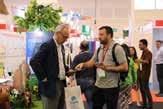
VNU Asia Pacific, together with their partners, is ready to announce the trade exhibition calendar for 2023, which will start with VIV Asia, the biggest feed-to-food event in Asia, dedicated to the world of livestock

production, animal husbandry, and all related sectors, from feed production to animal farming, breeding, veterinary, animal health solutions, slaughtering of meat, processing of fish, egg, dairy products and more.
VIV Asia will take place from 8-10 March 2023 at Challenger Hall 1-3, IMPACT, Bangkok. In the meantime, Meat Pro Asia is Asia’s leading processing and packaging trade fair for eggs, poultry, meat, seafood & food products. By facilitating key suppliers worldwide, Meat Pro Asia gains access to potential high markets in ASEAN. Meat Pro Asia focuses exclusively on solutions that deliver animal-based protein products from farm to table. VIV Asia and Meat Pro Asia will open their doors on 8 - 10 March, 2023 at IMPACT, Bangkok, Thailand, under one roof. Stay tuned and prepare for your visit to Bangkok, Thailand next year. For more information, please visit www. vivasia.nl and www.meatpro-asia.com Mr. Phoomchai Traidalanon, Senior Vice President of Kasetphand Group, Kasetphand Industry Co., Ltd., K.S.P Equipment Co., Ltd., KPI-Agritech Co., Ltd., and KP Greenergy Co., Ltd., said that “We join ILDEX Exhibitions at every edition to serve the market in Vietnam and to open new markets in Indonesia. That is why we have confirmed to participate in VIV Asia, which is an important trade exhibition for the Agri-business and livestock markets in the Asia region.”
2022 International Petfood - December 2022 | 31
IPPE 2023
The International Production & Processing Expo (IPPE) 2023 will be held on January 24 – 26 at the Georgia World Congress Centre in Atlanta, Georgia, USA.


Continuing to evolve and grow, IPPE works to meet the needs of their attendees and exhibitors, providing the latest innovations and knowledge the world has. The annual show is the flagship event for the meat, poultry, and feed industries, offering a large variety of education and interactive exhibits.
The B2B event attracts thousands of international visitors from over 120 countries, which offers ample opportunities for networking and building new connections.

Especially with over 1000 exhibitors and 100 feature exhibitors, there will be plenty of innovations and companies to familiarise yourself with, learn about and connect with.
Each exhibitor will showcase their latest innovations and products
to visitors, sharing the latest information within the industry with each other. The exhibitors will range in specialities, from food safety, to media, to genetics & breeding. There will also be several conferences to attend that will be hosted by experts, with a mixture of both free and fee-based options to choose from.
IPPE is keen to protect the health of everybody attending and with the continued outbreaks of African swine flu (ASF) this year, IPPE are asking people to stay away from any contact with pigs and other livestock for a minimum of five days before the event. Additionally, IPPE will be prohibiting the distribution of any bulk or packaged samples of feed ingredients or additives as research has found that the ASF virus can survive in some feed ingredients if contaminated. Biosecurity measures will be used throughout the event, with foot cleaning mats and hand washing dispensers being available and encouraged to be used. “We are pleased with the excitement displayed by this year’s (2022) attendees and

exhibitors and their enthusiasm in reconnecting with their colleagues from around the world. The trade show floor and attendee and exhibitor numbers continue to complement IPPE’s unparalleled education sessions, invaluable networking opportunities and extensive exhibits highlighting the latest innovative technology, equipment, and services for our industries,” remarked the three sponsors of IPPE, American Feed Industry Association (AFIA), North American Meat Institute (NAMI) and U.S. Poultry & Egg Association (USPOULTRY). IPPE 2023 is once again sponsored by these three companies.
Milling and Grain magazine will be attending IPPE and are looking forward to meeting everyone there. We will have a stand, number B8203, that you can visit us at, where we will have complimentary magazines available. If anyone would like to schedule a meeting with us then please email tutit@perendale.co.uk.
More information on IPPE here: https://www.ippexpo.org/
Your industry training platform Learn more – Learn onsite Enroll in the 12-week Course www.onlinemillingschool.com FISH FARMING TECHNOLOGY
Industry Events
2022 December 6-7



Petcare Innovation Summit Boston, USA www.petcareinnovationsummitusa.com
2023 January 24-26
IPPE Atlanta, Georgia, USA www.ippexpo.org 25-27

Global Pets Forun Berlin, Germany www.globalpetindustry.com s

2023 March 6-8
Animal Health, Nutrition, and Technology Innovation Europe London, UK www.kisacoresearch.com/events/animal-health-europe-2023 22-23
Global Pet Expo Orlando, Florida, USA www.globalpetexpo.org/2023M
2023 May 1-3
Petfood Forum Kansas City, Missouri, USA www.petfoodforumevents.com

15-17
Zoomark International Bologna, Italy https://www.expobeds.com




2023 August 16-18
Pet South America Sao Paulo, Brazil www.petsa.com

2023 October 2-5 VICTAM LatAm Sao Paulo, Brazil www.victamlatam.com

2024 May 7-10
Interzoo 2024 Nuremberg, Germany www.interzoo.com
International Petfood - December 2022 | 33
Strong performance of EuroTier: Pioneering



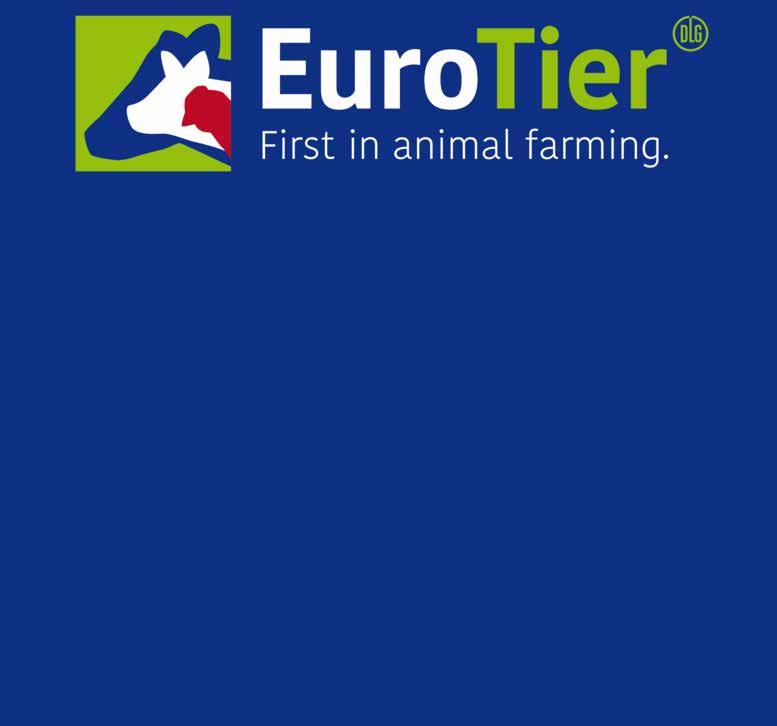
innovations enable transformation of livestock and energy

Our team attended Eurotier 2022 took place recently in Hannover, Germany from November 15 - 18.

A wide selection of industry professionals attended from a variety of countries across the globe. Over 1800 exhibitors came together to showcase from 57 countries, with approximately 106,000 visitors from 141 countries. The fourday show featured over 400 trade events and conferences to attend, providing an exciting and busy atmosphere. The overall theme of Eurotier 2022 focused on ‘transforming animal farming’, and looked at emerging trends, future developments, and innovations in the sector. Other topics frequently mentioned in the talks and conferences include sustainability, climate change, energy, new
solutions, the environment, and animal welfare.
There were several conferences and round tables tackling the recent issues faced by Ukraine and its affects and future outlooks on agriculture and animal farming.
Such a large international crowd invited many networking opportunities for those who attended, each hall displaying a variety of insights into animal production, including equipment, animal feed, veterinary and health products, new innovative designs, and pioneering techniques. The event provided the chance to see all these new developments in the sector and was a great success.
A full detailed report will be published in the January edition of Milling and Grain.
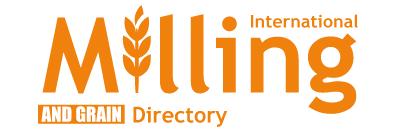
COMINGSOON!


































Bagging systems Bühler AG +41 71 955 11 11 www.buhlergroup.com FAWEMA +49 2263 716-0 www.fawema.com Statec Binder +43 3112 38 5800 www.statec-binder.com Bulk storage AGI www.aggrowth.com Behlen +1 402 564 3111 www.behlengrainsystems.com Behn + Bates +49 251 9796 252 www.behnbates.com Brock +1 866 658 4191 www.brockgrain.com Bühler AG +41 71 955 11 11 www.buhlergroup.com Silo Construction & Engineering +32 51723128 www.sce.be Symaga +34 926640475 www.symaga.com TSC Silos +31 543 473979 www.tsc-silos.com Van Aarsen International +31 475 579 444 www.aarsen.com Computer software Inteqnion +31 543 49 44 66 www.inteqnion.com Van Aarsen International +31 475 579 444 www.aarsen.com Coolers & driers Bühler AG +41 71 955 11 11 www.buhlergroup.com Consergra s.l +34 938 772207 www.consergra.com Extru-Tech +785 284 2153 www.extru-techinc.com FrigorTec GmbH +49 7520 91482-0 www.frigortec.com FAMSUN +86 85828888 www.famsungroup.com Van Aarsen International +31 475 579 444 www.aarsen.com Yemmak +90 266 7338363 www.yemmak.com Yemtar Feed Mill Machines +90 266 733 8550 www.yemtar.com Dosing Bühler AG +41 71 955 11 11 www.buhlergroup.com Van Aarsen International +31 475 579 444 www.aarsen.com Elevator buckets 4B Braime +44 113 246 1800 www.go4b.com Tapco Inc +1 314 739 9191 www.tapcoinc.com Yemtar Feed Mill Machines +90 266 733 8550 www.yemtar.com Elevator & conveyor components 4B Braime +44 113 246 1800 www.go4b.com Bühler AG +41 71 955 11 11 www.buhlergroup.com Henry Simon +44 0161 804 2800 www.henrysimonmilling.com Tapco Inc +1 314 739 9191 www.tapcoinc.com Yemtar Feed Mill Machines +90 266 733 8550 www.yemtar.com Van Aarsen International +31 475 579 444 www.aarsen.com Extruders Almex +31 575 572666 www.almex.nl Andritz +45 72 160300 www.andritz.com Bühler AG +41 71 955 11 11 www.buhlergroup.com IDAH +866 39 902701 www.idah.com Wenger Manufacturing +1 785-284-2133 www.wenger.com Yemmak +90 266 7338363 www.yemmak.com Yemtar Feed Mill Machines +90 266 733 8550 www.yemtar.com Feed milling PLP +39 05 23 89 16 29 www.plp-systems.com vibronet-Gräf GmbH & Co.KG +49 6441 62031 www.vibronet.com Yemmak +90 266 7338363 www.yemmak.com Zheng Chang +86 2164184200 www.zhengchang.com Feed Mill Automation Bühler AG +41 71 955 11 11 www.buhlergroup.com Van Aarsen International +31 475 579 444 www.aarsen.com Laboratory equipment Tekpro +44 1692 403403 www.tekpro.com The Market Place lists leading manufacturers of equipment used for the production of petfood. To be included in the Market Place please contact Tuti Tan at tutit@perendale.co.uk. International Petfood - December 2022 | 35
the interview
Roger Townsend, President, Behlen Grain Systems
Roger Townsend grew up in a rural area in Southwest Pennsylvania, USA. As a teenager he worked for most of the surrounding farmers, experiencing everything from dairy, hog production, and crop production. He graduated from Grace College, Winona Lake, Indiana, Psychology and Business Administration. Throughout his college years he worked in a local factory and learned manufacturing processes, with a special emphasis on steel fabrication. In 1977 he started in the grain bin industry at Brock Grain Systems, with roles starting as a machine operator, ultimately become Executive VP/General Manager. Then in 2001 Mr Townsend joined Chief Industries Inc as President of Chief Agri Division, before retiring from Chief in 2017. In January of 2022, he re-emerged from retirement to join Behlen Grain Systems. With hobbies that include flying, tennis, music, and outdoor grilling and bbq, Mr Townsend has previously served on Equipment Manufacturers Council for AFIA, including Chairman of the EMC and on the Board of AFIA, representing Equipment Manufacturers.
What initially lead you to get involved with the grain storage industry?
With my background growing up in a rural farming area, I enjoyed the work and the involvement with the local farmers, and feed millers that served the local dairy and hog industry. I gained a great appreciation for the planning and execution involved in the overall agricultural process.
Having experienced and enjoyed manufacturing during my college years, it was a natural fit to start a career in agriculture equipment manufacturing.
Throughout your extensive career what have been the most significant changes you have observed in the industry?
Everything has got bigger; faster; better. When I first started in the industry, a large grain bin held 100,000 bushels of grain. Behlen now manufactures grain bins that hold two million bushels of grain. There are conveyors and bucket elevators operating at rates in excess of 60,000 bushels an hour, compared to 5000 bushels an hour 40 years ago. These changes were necessitated by the continued increase in production yields, the size and speed of harvesting equipment, transportation logistics, and a general increase in the world need for more food. Another significant change that I have observed in my extensive career is the advances in technology – and that’s on all fronts.
While rare, unfortunately grain storage accidents continue to be a reality in our industry. What do you think needs to happen to reduce the occurrence of such events?
Firstly, I believe Zero Entry needs to become the standard for the entire industry at all levels. If is absolutely necessary to enter a grain bin on top of the grain, a safety harness is an absolute necessity.
Secondly, there needs to be a continued emphasis on Safety Training at all levels as well, with written safety procedures, whether at a large commercial facility, or on the farm.
Finally, I believe that there are opportunities to increase the use of cameras/video to observe sweep auger operations, etc.
What advice would you give those looking to improve their grain storage operations?
With the technology advances, I believe an automated monitoring/conditioning system is well worth the investment to help keep grain in proper condition. Developing and implementing a Preventative Maintenance Program will also help to minimise breakdowns and extend the life of equipment. Operators should also regularly evaluate and mitigate any safety concerns.
36 | December 2022 - International Petfood
Global food demand is increasing. What will this mean for the grain storage industry, and what do you think will be the greatest challenges in the future?
There continues to be a need for ‘common sense’ regulatory reform throughout the agricultural industry. Too often, regulation causes lots of pain for little or no gain. From farmers to coops, grain companies, millers, processors, and equipment manufacturers, voices need to be heard and heeded. Biosecurity is also becoming a much more important issue and will continue well into the future.
When I first entered the grain storage industry, most manufacturers were more regionally focused. As the entire food production industry has grown and changed, along with industry consolidation, now and the future means participating in a global marketplace.

Lastly, after being away from the industry for the past few years, it is a joy to be back working in the industry where I spent my entire career. Developing new relationships and renewing relationships, with co-workers, former co-workers, suppliers, dealers, end users, and competitors, this industry is made up of a lot of great people, and I’m thrilled to again be a part of this great industry.
What would you say is the most inspiring way to get younger generations more involved in, and excited by the grain storage industry?
We play a vital role in feeding the world. Vital work needs to continue in finding ways to increase production, but also to reduce damage, spoilage or loss in the handling and storage process as the demand for food for the world continues to grow. I believe it can be exciting and inspiring to be part of the process of feeding the world.
THE INDUSTRY FACES
Nulo announces Molly Mulcahy as Senior Vice President of Marketing Nulo ,a leading growth driver in the premium pet food space announced the appointment of Molly Mulcahy as Senior Vice President of Marketing reporting to its founder and CEO ,Michael Landa ,where she will lead Nulo‘s global marketing organisation overseeing consumer and retail marketing ,advertising and the brand‘s digital marketing initiatives .Ms Mulcahy will be responsible for developing and executing strategies that continue to build Nulo‘s brand awareness ,conversion and loyalty
Ms Mulcahy brings +20 years of experience leading B2B and B2C marketing for both established brands, such as Unilever ,as well as challenger brands in the petfood industry including Stella & Chewy‘s She has the intellectual agility to translate her experiences across industries in very different contexts and possesses the ability to bring people together to find new ways to unlock and accelerate growth
Joshua Errett, founder of because Animals, joins CULT Food Science as VP Product Development

CULT Food Science Corp., has announced that it has recently appointed Joshua Errett as its VP of Product Development.
Mr Errett is a proven operator and founder with experience in commercialising cell-based consumer products. He co-founded Because Animals, Inc. in 2016, as the world’s first cultured meat pet food company.
Mr Errett worked as its Chief Operating Officer as well as leading the entity’s finance, sales and marketing efforts. Because Animals was both a bioscience company, with two labs and approximately 20 scientists working to scale cultured meat for commercial pet food, as well as a fully operational pet food company, with products in Petco, Chewy and other independent stores around the United States.
Alyssa Miller-Hurley joins the Pet Advocacy Network as Senior Director of Government Affairs


The Pet Advocacy Network, the advocacy voice of the responsible pet care community, welcomes Alyssa Miller-Hurley as the new senior director of government affairs. Ms Miller-Hurley has over a decade of experience in government relations and managing campaigns. To further the Network’s advocacy and policy objectives, she will manage a legislative and regulatory portfolio spanning multiple states and cultivate strategic relationships with allied stakeholders and officials.
Ms Miller-Hurley was formerly the national legislative political director at the Progressive Turnout Project (PTP), where she established a state legislative program for both issue advocacy and direct lobbying. In addition, she was responsible for the program’s $15 million budget. Prior to that, she was the associate director of campaigns at NARAL Pro-Choice America, where she developed a unified state lobbying program and oversaw the organisation’s state legislative and electoral campaigns.
Ms Miller-Hurley will also be the staff representative to one of Pet Advocacy Network’s member-driven subcommittees, liaise with federal and state agencies, and supervise the organisation’s government affairs department.
Scoular promoted Steven Moore to Vice President of Food Safety, Quality, Regulatory and Innovation

Mr Moore previously had served as Director of FSQRI for Petsource, an indirect, wholly owned subsidiary of Scoular. In his new role, he will lead this function for the entire Scoular company, as well as the Petsource subsidiary.
Scoular has a long history as a trusted and reliable ingredient supplier in the food and feed industries. The company is known for providing safe and innovative ingredient solutions for our customers and aims to exceed safety standards, not just meet them. Mr Moore brings the experience and expertise to continue that high level of service across our company.


Mr Moore spent portions of his career in both the human and pet food sectors, representing organisations such as Michael Foods, Instinct, Conagra Brands and Monogram Foods. He has a master’s degree in food science from Kansas State University and a doctorate degree in organisational development and leadership from the University of Arizona. Mr Moore led the global food safety initiative at Petsource which resulted in a perfect score in the site’s first two years of production.

38 | December 2022 - International Petfood






















SPECIALIST NEUERO produces the most reliable and high-quality bulk ship loaders worldwide | neuero.de/en
SHIPLOADER



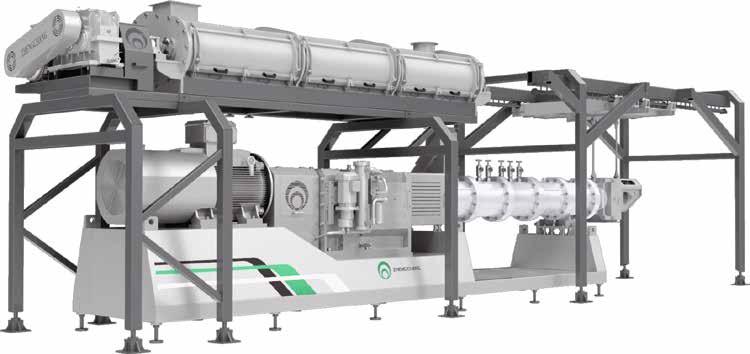
Official Website Facebook ZhengChang Group : No.28 Zhengchang Road, Kunlun Development Zone, Liyang, Jiangsu, China : +86 21-6418 4200 Fax : +86 21-6416 3299 : International@zhengchang.com : www.zhengchang.com/eng Address Telephone E-mail Website Fomula management, one-key startup, load control, precise addition of water vapor, production information recording. Twin-Screw Extruder SPHS Series













































































 by Jyothsna Nelloolichalil, International petfood magazine, UK
by Jyothsna Nelloolichalil, International petfood magazine, UK
















































































































